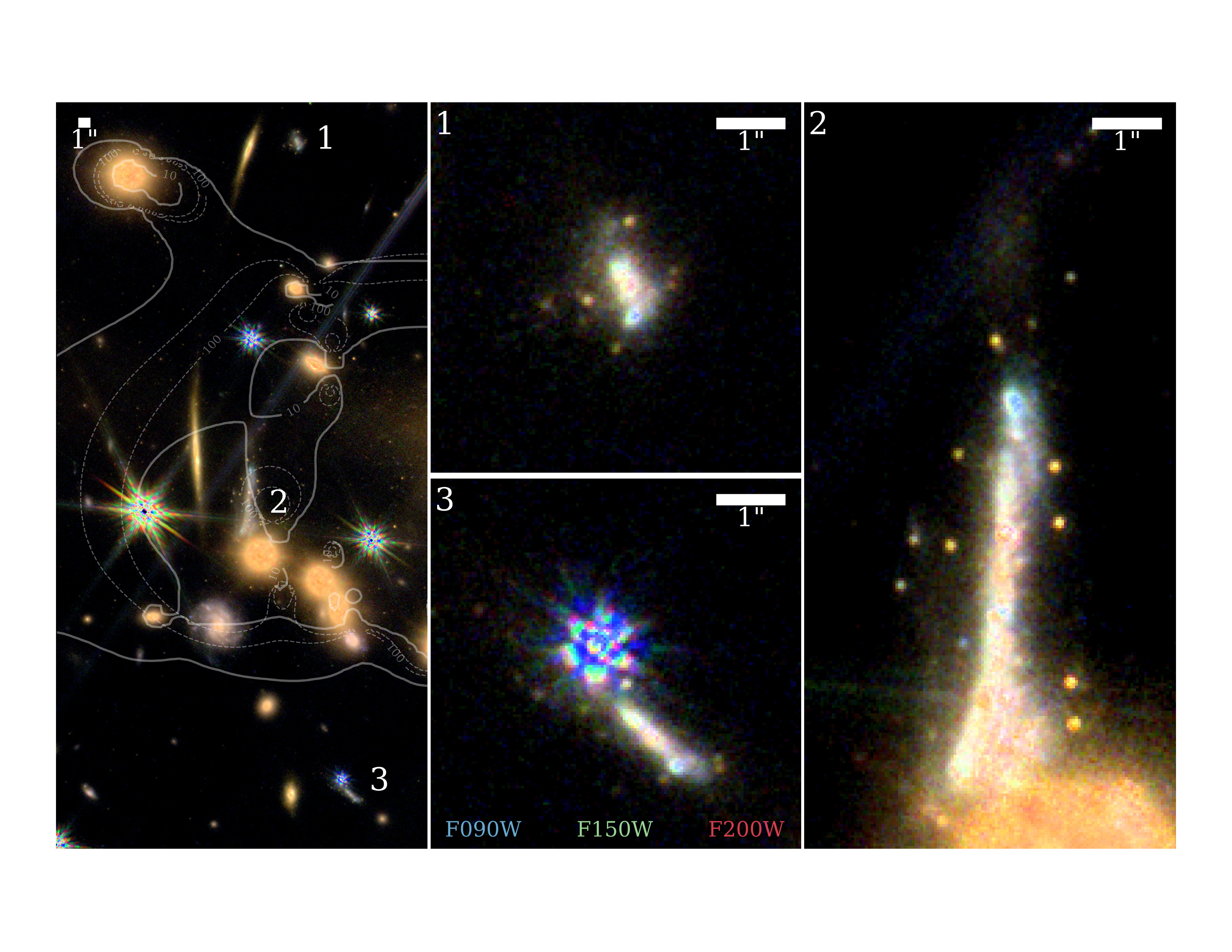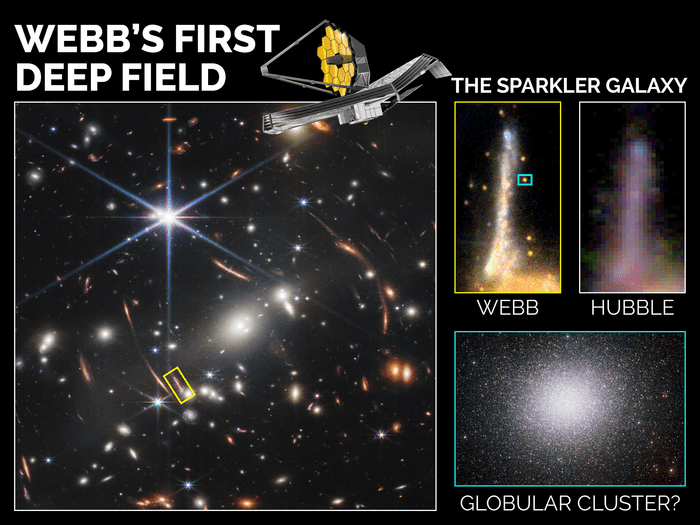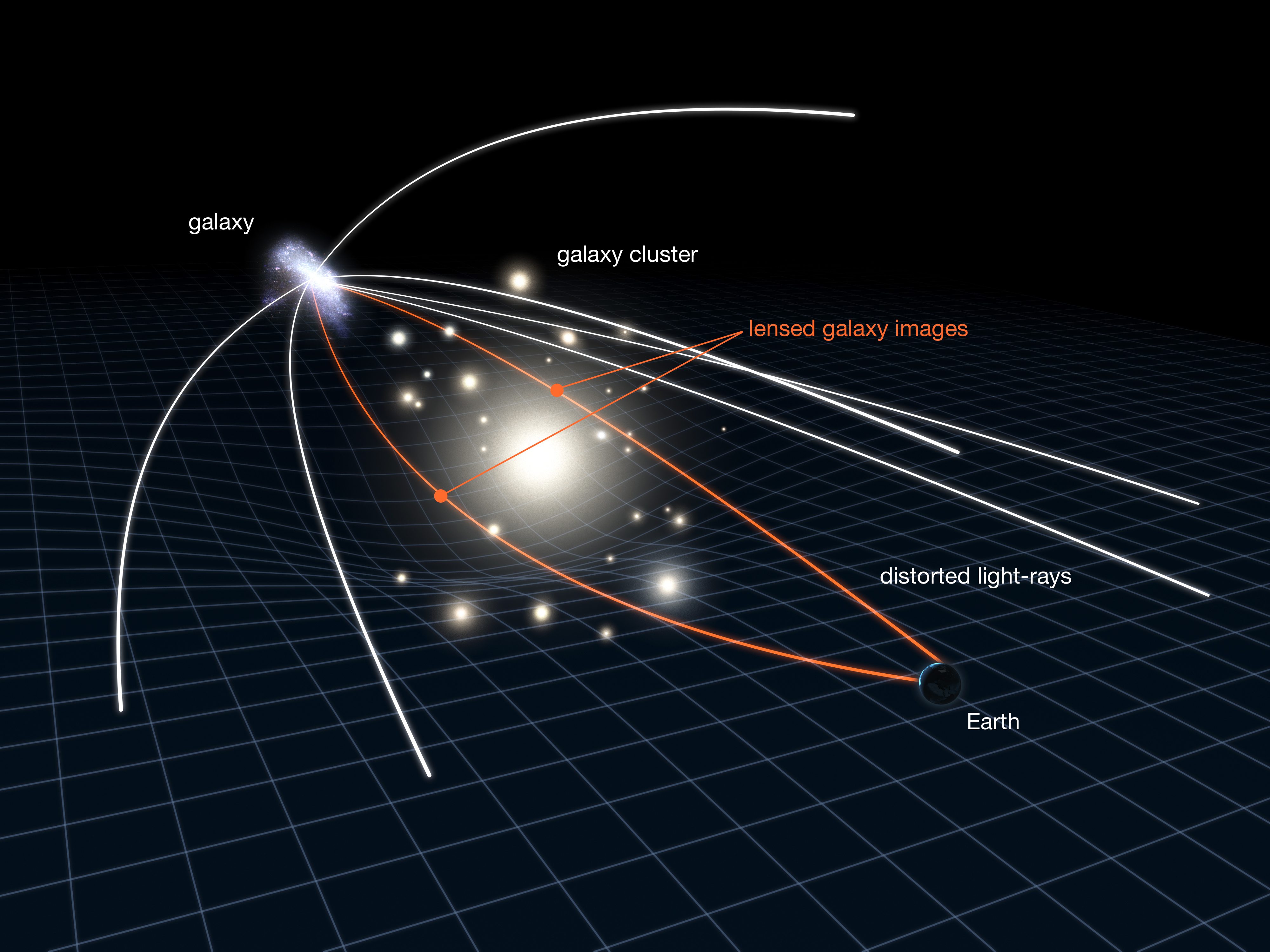A galaxy in JWST’s first deep field image contains a galaxy 9 billion light years away, nicknamed the Sparkler Galaxy. Compared to some others in the field, that’s not particularly distant. However, the sparkles that inspired the name are star clusters, at least some of which are the most distant globular clusters ever seen.
Dotted around the Milky Way are 150 balls of tightly packed stars, like islands off the coast of a continent. Known as globular clusters (or just globulars) to reflect their spherical shape and differentiate them from the open clusters inside the galaxy, these can contain up to 10 million stars. Other large galaxies have them as well – in some cases, far more than the Milky Way.
Globular clusters have been important to the development of astronomy because they contain very old stars and provide insight into the way galaxies form. In a new paper, Dr Lamiya Mowla of the University of Toronto and co-authors reveal ancient globular clusters surrounding the Sparkler Galaxy.

The Sparkler Galaxy showing its surrounds and in close up, with the clusters visible as yellow dots. Image Credit: NASA/ESA/CSA
The galaxy’s “sparkles” were quickly identified as clusters of stars, but even with the JWST’s mighty resolving power, the distance made it hard to identify the cluster type. On first inspection, these might be open clusters of actively forming stars, not globulars.
Researchers chose 12 of these clusters uncontaminated by nearby objects to examine in depth. The absence of oxygen emission lines led them to conclude at least five of these are globulars – possibly the oldest we have ever found, formed around 500 million years after the Big Bang.
“Looking at the first images from JWST and discovering old globular clusters around distant galaxies was an incredible moment, one that wasn’t possible with previous Hubble Space Telescope imaging,” said Dr Kartheik Iyer in a statement. “Since we could observe the sparkles across a range of wavelengths, we could model them and better understand their physical properties, like how old they are and how many stars they contain.”

The Sparkler Galaxy outlined in yellow, how it looks from the JWST. with a cluster in a blue box, and to Hubble, and one of the Milky Way’s clusters. Image Credit: Canadian Space Agency with images from NASA, ESA, CSA, STScI; Mowla, Iyer et al. 2022
Although the Milky Way’s globular clusters have long been known to be ancient, quite how old remains uncertain. By seeing clusters as they were much earlier in their lives, we should be able to calibrate nearby clusters more easily.
“These newly identified clusters were formed close to the first time it was even possible to form stars,” Mowla said. “It’s easy to tell the difference between a 5- and 10-year-old, but hard to tell the difference between a 50- and 55-year-old.”
Studying the Sparkler Galaxy’s clusters is a little like seeing a photo of someone 50 years ago, allowing a more accurate estimate of their current age.
The Sparkler clusters could also settle a long-running debate about how globular clusters form.
Powerful as the JWST is, most globular clusters at such a distance would be beyond its capacity. However, the Sparkler Galaxy lies behind the SMACS 0723 galaxy cluster, which creates an extreme gravitational lens, not only magnifying the clusters 10-100-fold, but creating three images of the Sparkler. This allows astronomers to compare the images and confirm clusters are associated, rather than being in the same direction but at a different distance.

Large masses curve space time, causing light to bend and creating a lens. Our view of the Sparkler Galaxy greatly benefits from this. Image Credit: NASA, ESA & L. Calçada
This research was published in the Astronomical Journal Letters (Open Access)
Source Link: JWST Sees “Sparkler Galaxy” Surrounded By Most Distant Star Clusters Ever Found